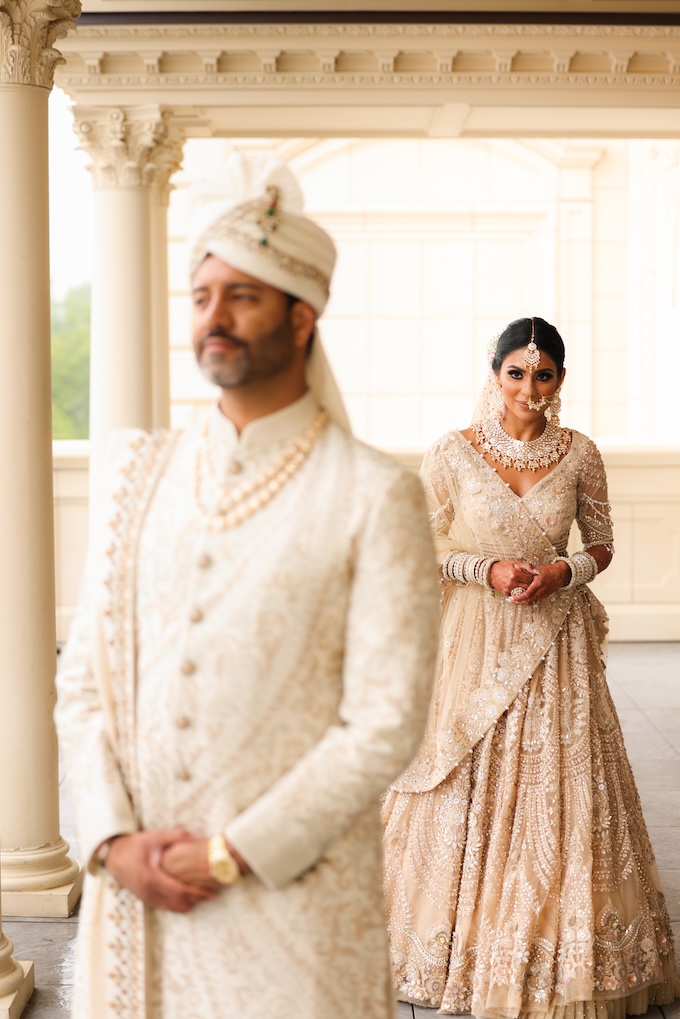Mahesh Shantaram’s Matrimania Culture
March 8, 2013
Before Mahesh Shantaram started his career as one of the premiere wedding photographers in India, he was so against the institution that he didn’t even attend his own sister’s wedding. “It’s one of the little ironies life throws at you,” he said of the unusual path of his career.
Despite his initial prejudices, Shantaram is one of the most in-demand professionals in the field, winning not only myriad assignments, but also a number of prestigious accolades such as third place in the Arts and Culture category in the Sony World Photography Awards in 2011. His emotive and moving photographs, which capture the essence of a society still opaque to many Westerners, have been overwhelmingly well-received not only by his clients, but also by the larger art world. In the past two years a solo exhibition of his work called “Matrimania” has toured internationally, traveling to a number of locations including the Musée du quai Branly in Paris, the Somerset House in London and the Empty Quarter Gallery in Dubai. It has also inspired two young documentary filmmakers to make a feature length film about him, which will also be called Matrimania, and is scheduled for release in 2014.
Fleeing The Cubicle
When Shantaram first decided to become a photographer, he was working as an information technology (IT) specialist in Washington, D.C. He had recently moved there from Bangalore, at the invitation of a former boss. “After a few months, I realized what I had known all along,” he said. “I just wasn’t cut out for the corporate environment.”
He made a list of things he knew he could offer to the world, and decided to pursue an old hobby, photography. In 2006, he quit his job—much to the chagrin of his former boss—and moved to Paris, where he studied at the Spéos International Photography School.
After graduation, he returned to Bangalore, where he spent a year looking for assignments. Then, in 2007, some of his family members asked him to shoot their wedding. “They already thought I was crazy for quitting my job,” he said. “They expected something unconventional, so I was able to do whatever I wanted.”
In Paris, Shantaram had studied documentary photography, which he found he could put to use when shooting weddings. “At the time, in India, no one was applying principles of photojournalism to weddings,” he said. “It was largely just ‘stand and pose’ photography. I thought it was an opportunity lost! Indian ceremonies are so full of drama and action and color!” After the wedding, he put the photographs on the Internet. They immediately went viral.
Before long, Shantaram was getting hired for paid jobs. “There are many Indians living in the United States who come home to get married,” he explained. “They are scared of their wedding days getting ruined by traditional photography, so they come to me.”
As his reputation grew, he started getting called all around India. “I could shoot anywhere in the world,” he said. “But I want to get to know my own country.” As a boy who grew up in a city, he had always imagined great diversity in rural areas, but had never experienced it himself. “In my wildest dreams, I couldn’t have imagined how diverse the country is.”

Seeking The Offbeat
Shantaram now has his pick of clients, many of them celebrities, but he chooses his assignments based on novelty. On many occasions, he’s had to look up the location of the wedding on a map. Frequently, his expectations are completely overturned. “One time, I was invited to shoot a wedding in a small town, which I didn’t take that seriously,” he said. As he was driving towards the venue, he began noticing that every billboard in the town was a wedding invitation. On the day of ceremony, over 11,000 people showed up. “The grandfather of the groom founded the university in the region,” he said. “Even though it’s 300 miles from the coast, it’s one of the premiere places to study marine engineering. Every important person in a 50-mile radius was there.”
In the beginning, both Shantaram and his subjects had to overcome some of the discomfort that came with overturning traditional rules. “There was a lot of verbal convincing I had to do before I even could start taking the photographs,” he laughed. Now that he is a name brand, however, he can do what he wants. “I don’t have to talk so much,” he said. “I can use the camera as a shield, and just immerse myself in everything.”
Shantaram also experienced a lot of internal conflict about his career path. “In 2007, in India, being a wedding photographer was not something you would aspire to,” he said. “It was difficult for me to prove my worth, both to myself and to others.”
Quickly, however, he realized that weddings offered an incredible opportunity to visually comment on India, and its complicated social fabric. “There is so much room for criticism, if you know the problems India is facing,” he said. “One can point the camera at a wedding, and capture all the wealth, excess and patriarchy that many people find to be problematic.”
Shantaram, however, is not looking to make any sort of political statements. Rather, he is collecting visual evidence so that the world can have a more informed picture of India. “I am not looking for images that are either negative or positive,” he said. “I’m just reacting like an animal, with animal instincts. If I see something that interests me, I’m not thinking about ‘why,’ I just jump at it.”
Of the 2,000 shots he takes at a wedding, he usually chooses one or two that he then likes to include in his ongoing “Matrimania” project.

“Matrimania” In Motion
When Vincent Bitaud and Maximilien Van Aertryck approached Shantaram about making a documentary, he was overjoyed.
“Photography feels so inadequate sometimes,” he said. “Film is a medium that can cover such large gaps in the story.”
Shantaram had first met Bitaud in 2007, at a photography workshop in Ireland. Van Aertryck met Shantaram in 2011, on a trip to Bangalore, via an introduction by Bitaud. At the time, the two young Europeans (Bitaud is from France, Van Aertryck from Sweden)had just finished a short film, Icebreakers (2011), about a nine-night party boat trip through the Baltic Sea. “We are both interested in cultural phenomenon and social relationships,” Van Aertryck said. “We love going into new social environments and letting a documentary write itself.”
Soon after meeting, the duo asked Shantaram if they could follow him as he traveled through India for the wedding season, which lasts from November until January. He happily agreed. Their itinerary covered a wide swath of the vast region, including stops in Chennai, New Delhi, Chandigarh, Chhattisgarh, and the remote city Ahmedabad.
In each spot, the European filmmakers discovered something new about a country that as Westerners they found to be both very difficult, and very beautiful.
For Shantaram, having the filmmakers trail along was just another adventure to add to his long list of incredible experiences. “My life is just amazing,” he said. “Every wedding is a new opportunity to experience something completely mad.”
View more of Shantaram’s work at www.thecontrarian.in. Preview Matrimania, at www.kisskissbankbank.com/en/projects/matrimania-the-film.
Brienne Walsh is a writer, photographer and art critic who contributes to publications such as Art in America, The New York Times, ArtReview, Modern Painters, Interview, Departures, NYmag.com, Forbes.com and The Huffington Post.




